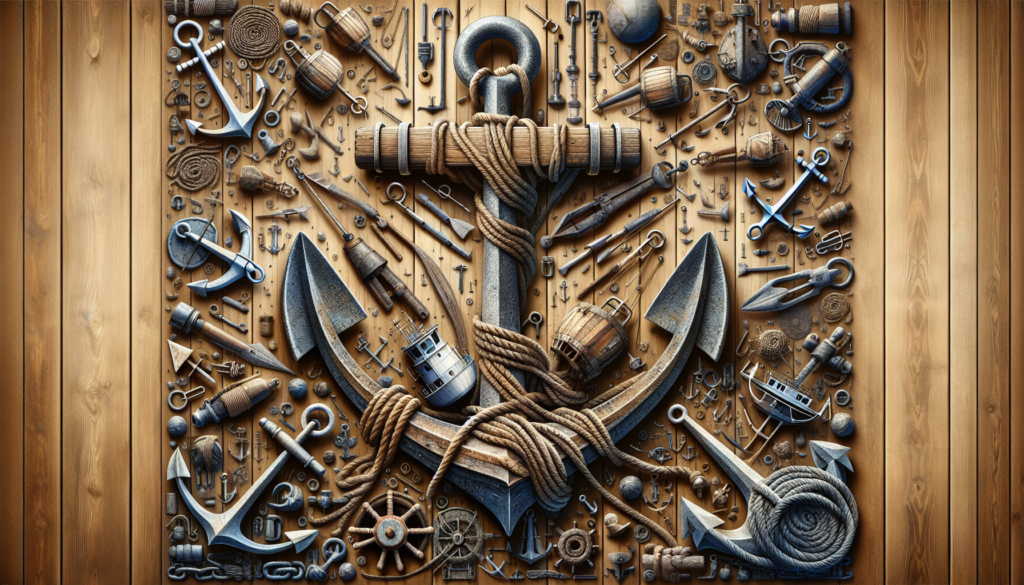Exploring the Depths: The Ultimate Guide to Boat Anchors
Picture this: a serene morning on the open waters, the sun casting a golden glow over the horizon, the gentle lapping of waves against your boat. But suddenly, you feel a shift in the wind, the currents growing stronger. It’s time to drop anchor and secure your vessel. Anchors are a crucial piece of equipment for any boat, providing stability and safety in varying conditions. In this comprehensive guide, we dive deep into the world of boat anchors, exploring their history, types, uses, and importance on the water.
The History of Boat Anchors
The concept of using anchors to secure boats dates back thousands of years, with evidence of early civilizations such as the Egyptians and Greeks using rudimentary forms of anchors made from rocks or heavy objects tied to ropes. As maritime exploration expanded, the need for more sophisticated anchoring systems grew. The Romans, for example, developed the first iron anchors, which were more durable and effective in holding ships in place.
Throughout history, anchors have evolved in design and materials, with innovations such as the fluke anchor, the stockless anchor, and the modern-day Danforth anchor. Each type of anchor is designed to suit different types of seabeds and conditions, ensuring that boats can anchor safely and securely.
The Importance of Boat Anchors
Boat anchors play a crucial role in the safety and stability of a vessel, especially in adverse weather conditions or strong currents. By anchoring your boat properly, you can prevent drifting, ensure stability while fishing or swimming, and provide a secure base for overnight stays. Anchors also help in emergency situations, allowing boats to stop and stabilize quickly if needed.
Choosing the right anchor for your boat is essential to ensure its effectiveness. Factors such as boat size, weight, and the type of seabed you will be anchoring in should be considered when selecting an anchor. Investing in a high-quality anchor and proper anchoring techniques can make all the difference in keeping your boat safe and secure on the water.
Types of Boat Anchors
There are several types of boat anchors available, each designed for specific conditions and seabeds. Some of the most common types include:
1. Plow Anchor
The plow anchor, also known as the CQR anchor, is a popular choice for larger boats and vessels. It is designed to dig into the seabed and provide a strong hold, making it ideal for rocky or weedy bottoms. Plow anchors are versatile and reliable in a variety of conditions.

2. Danforth Anchor
The Danforth anchor, also called the fluke anchor, is lightweight and easy to handle, making it a popular choice for smaller boats and recreational vessels. It is designed to hold well in sandy or muddy bottoms, providing a secure hold in most conditions.

3. Mushroom Anchor
The mushroom anchor is shaped like a mushroom cap, with a heavy base and a slender stem. It is designed to sink into soft bottoms such as mud or sand, providing a gentle hold for smaller boats or temporary anchoring.

4. Claw Anchor
The claw anchor, also known as the Bruce anchor, is designed to provide a strong hold in rocky or coral bottoms. Its claw-like shape allows it to grip the seabed securely, making it a popular choice for boats in challenging anchoring conditions.

Expert Opinions
We reached out to Captain John Smith, a seasoned sailor with over 20 years of experience, for his insights on boat anchors:
“Choosing the right anchor for your boat is crucial for safety and peace of mind on the water. I always recommend investing in a high-quality anchor that is appropriate for the size and weight of your vessel. Proper anchoring techniques, such as setting out enough rode and setting the anchor firmly, can make all the difference in ensuring a secure hold.”
Common Misconceptions
One common misconception about boat anchors is that bigger is always better. While it is essential to choose an anchor that is appropriate for the size and weight of your boat, a larger anchor does not necessarily mean a stronger hold. Factors such as anchor design, seabed conditions, and proper anchoring techniques play a more significant role in anchor effectiveness than sheer size.
Conclusion
To wrap things up, boat anchors are an essential piece of equipment for any boat, providing stability, safety, and peace of mind on the water. By understanding the history, types, and importance of boat anchors, boaters can make informed decisions when selecting an anchor for their vessel. Investing in a high-quality anchor, practicing proper anchoring techniques, and considering the specific conditions of the anchoring location are key steps in ensuring a secure hold and enjoyable boating experience.
Whether you’re a seasoned sailor or a novice boater, having a reliable anchor on board is a must for any maritime adventure. So next time you set sail, remember the importance of a good anchor to keep you safe and secure on the open waters.



